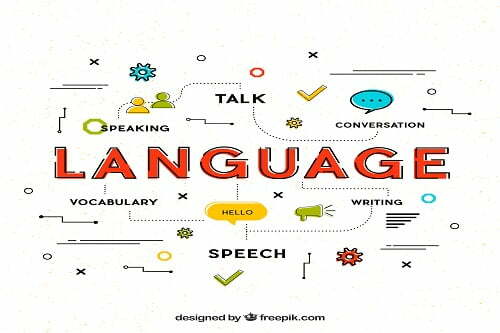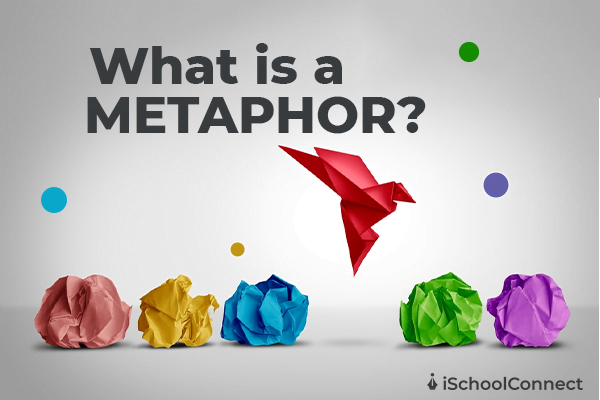Table of Contents
Metaphors | An overview
English is a global language, and almost every country has made it mandatory in their school to learn it as a first language. If you plan to pursue a degree in English literature, want to become a writer/journalist, or improve your writing skills, knowledge about metaphors can help you go a notch higher. This article will delve into what a metaphor is and some good metaphors with examples.
What is a metaphor?
In the English language, a metaphor is a part of figures of speech. It helps describe an action, though not true, by giving an idea or striking comparison to explain it better when words fail to describe it.
What is a figure of speech?
A figure of speech is a figurative language that moves away from conventional meaning or word order. There are 23 types in all – metaphor, simile, metonymy, personification, hyperbole, apostrophe, synecdoche, transferred epithets, irony, euphemism, epigram, pun, antithesis, oxymoron, interrogation, litotes, climax, exclamation, bathos (anticlimax), alliteration, onomatopoeia, circumlocution, tautology or pleonasm.
Concepts of metaphors that you should know of!
Coming to metaphors with examples, we need to understand that there are a few basic concepts associated with them-
- To compare or symbolize something, it is used to equate two similar things.
- A metaphor should never be taken literally. To give a metaphor example, when we say he/she was the family’s black sheep, we refer to the fact that he/she had a track record of being a troublemaker, worthless, and was a ‘disgrace’ to the family name. The phrase has been used to describe someone with different interests in a group or family. When someone says that they are/were the family’s black sheep, we immediately know what they are trying to refer to without saying it in so many words.
- You will encounter instances of metaphors in literature and poetry to enhance the language and the meaning of something.
- Origin of metaphor: The word metaphor can be derived from the 16th-century French word, metaphore, which came from the Latin word ‘metaphora’ meaning to ‘carry over’ and from the Greek word meaning ‘transference.’
- Rhetorician I.A. Richards in the book The Philosophy of Rhetoric (1937), has defined a metaphor as having two distinct parts, ‘tenor’ and ‘vehicle’. The tenor is always the subject to which the attribute is ascribed, and the vehicle is the object from which attributes are borrowed. An example of metaphor with the tenor and vehicle is as follows: The world’s a stage. Here, ‘world’ is the tenor and ‘stage’ is the vehicle.
Rules of metaphor
When you are using metaphor examples in sentences, there are three rules or guidelines you need to follow without ruining the meaning of the context-
1. It must ring true
You need to use the right tools in the right places in a sentence without being over-dramatic or drawing attention away from the actual context. It needs to be accurate and spot on. For example, if someone is in the habit of saying hurtful things, we usually say, ‘your words cut deeper than a knife.’
2. Don’t use metaphors that weaken a sentence
You should not pick a metaphor just for the sake of it. Always use it in a suitable tense. Only use it when it adds value to the sentence. For example, ‘her skin hummed against her bones’ is much better than ‘her skin seemed to be humming against her bones.’
3. Carefully use the metaphor
No matter how much you like writing or speaking in metaphors, using too many in a paragraph or in one page will take away the immediacy of the prose and make it sound or appear too forced.
Types of metaphors with examples

Broadly, there are four types of metaphors. Some of the metaphor types are as follows-
1. Implied metaphor
An implied metaphor departs from thing A to thing B and enables one to make a more subtle comparison employing implication.
Example: Jordan got his courtship cues from the peacock. In a room full of ladies, Jordan simply fans his feathers.
By comparing Jordan to a peacock, the writer is trying to imply that Jordan is trying to get ladies’ attention by being flirty or showy.
2. Sustained metaphor
As the name suggests, a sustained metaphor is sustained through numerous sentences or a large chunk of paragraphs without being overly dramatic. It requires a certain level of literary skill, and since it develops slowly over a big chunk of text, it can prove to be a powerful literary tool. The outcome will be vivid imagery in the person’s mind going through the text.
Example: ‘’But soft! What light through yonder window breaks? It is the East, and Juliet is the sun! Arise, fair sun, and kill the envious moon, who is already sick and pale with grief.’’
(Romeo and Juliet by William Shakespeare)
3. Dead metaphor
A dead metaphor refers to those metaphors that have been done to death in the English language. These include commonplace phrases like ‘heart of gold, ‘raining cats and dogs’, etc.
However, if they are too much in use in a piece of writing, the reader will eventually lose interest. To hold on to the interest of your audience, you will need to come up with the usage of the metaphor, even if it’s highly common, in a unique way.
4. Mixed metaphors
As the term suggests, a mixed metaphor is a mixture of two completely unrelated metaphors.
A mixed metaphor should ideally be used if you are trying to be funny in a sentence or a context. If that is not your intention, a mixed metaphor can completely dampen the reader’s interest levels.
Examples: ‘’I smell a rat. I see him floating in the air. But mark me, sir, I will nip him in the bud”.
If you want to get a better idea of how to use mixed metaphors in a literary piece, the works of the British humorist P.G. Wodehouse is a perfect example, who is known as a master of intentionally using these metaphors in the English language.
Famous metaphor examples in English literature
Now that we have spoken extensively about what a metaphor is, the rules of application for using a metaphor, and its various types, let us look at some great metaphor examples in literature.
- All the world’s a stage, and all the men and women merely players. They have their exits and their entrances.
[‘As You Like It’, play written by William Shakespeare] - I am the good Shepherd,…and I lay down my life for the sheep.
[The Bible, John] - All religions, arts, and sciences are branches of the same tree.
[Albert Einstein] - Advertising is the rattling of a stick inside a swill bucket.
[George Orwell] - And your very flesh shall be a great poem.
[Walt Whitman]
Key takeaways
- A metaphor is a figure of speech in English that describes something by comparing it with something else.
- A metaphor comprises two distinct parts, tenor and vehicle, where the tenor is the subject for comparison, and the vehicle is the object for describing the subject. Example: Heart of gold [heart is tenor and gold is vehicle]
- There are four types of metaphors- sustained, implied, dead and mixed.
That’s all for now! If you have any more questions about which program to choose, you can drop a comment below on reach out to us.
Liked this blog? then read 15 Figures of speech examples and how to use them!
FAQs
Q1. In which discipline can I use metaphor?
Answer: Students of literature, linguistics, and rhetoric need to be aware of figures of speech. In some cases, they have greater emphasis when pursuing a bachelor’s or master’s degree. Generally, metaphors are abundant in literary books, poetry, songs, speeches, journalistic pieces, etc.
Q2. What is the difference between simile and metaphor, with examples?
Answer: Both simile and metaphor compare something with something else. The only difference between the two is that a simile uses the words ‘like’ or ‘as’ at the time of the comparison, whereas a metaphor will go directly into the comparison.
Simile examples: As cool as cucumber/life is like a box of chocolates/ brave as a lion/ he is strong as an ox
Metaphor example: Love is a battlefield
Q3. What are some common and easy-to-use metaphor examples in everyday language?
Answer: Metaphors are a fun figure of speech and are extremely addictive when it comes to the intention and outcome of the application. Some common metaphor examples that you can use like a pro in your everyday communication are-
- Blanket of snow
- Better half
- Roller coaster (in terms of experience and emotions)
- Late bloomer
- Slippery slope
- Heart of stone
- Beating a dead horse
- Melting pot
- Couch potato
- The black sheep of the family/group






